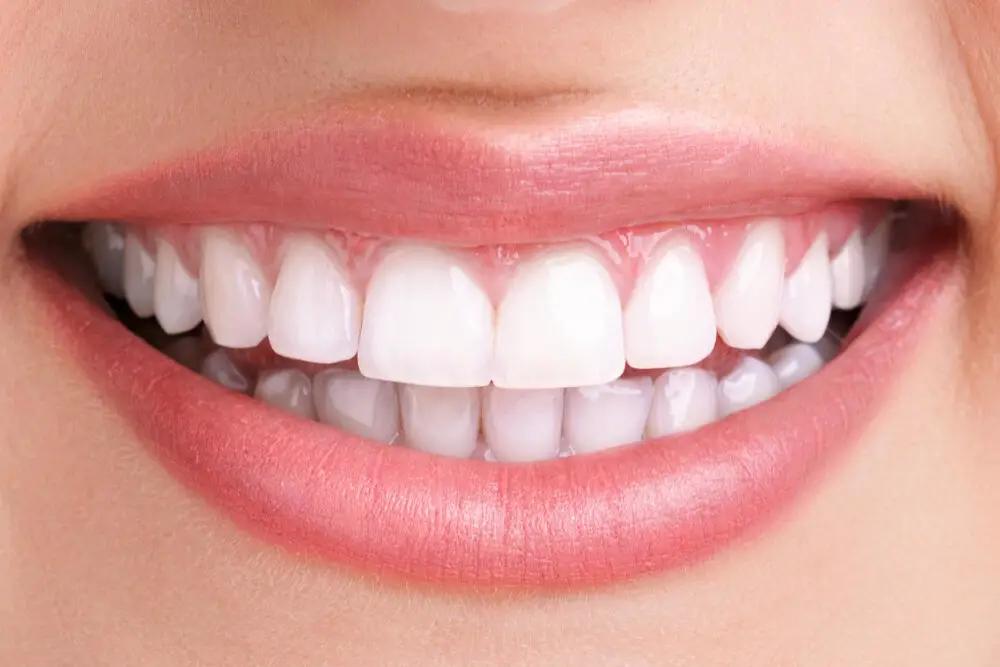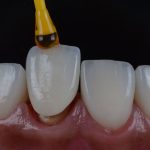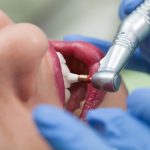Sedation for Wisdom Teeth Removal: Understanding Your Options

Wisdom teeth removal is a common dental procedure that many people undergo at some point in their lives. It involves the extraction of one or more wisdom teeth, which are the final set of molars that typically erupt in the late teenage years or early twenties. While the procedure itself is relatively straightforward, some patients may experience anxiety or discomfort during the process. This is where sedation comes into play- a technique used to help patients relax and feel more comfortable during dental procedures. Understanding your sedation options for wisdom teeth removal is essential to ensure a comfortable and safe experience. There are various types of sedation available, ranging from mild to deep sedation, depending on the patient’s needs and preferences. These options include nitrous oxide, oral sedatives, IV sedation, and general anesthesia. Each method has its own benefits and risks, so it’s essential to discuss your options with your dentist or oral surgeon to determine which one is best for you. In this article, we’ll explore the different sedation options for wisdom teeth removal, their benefits and risks, and what to expect during the procedure.
Wisdom teeth removal is a common dental procedure that involves the extraction of the third molars. These teeth usually appear between the ages of 17 and 25 and can cause discomfort, pain, and infection if they do not have enough room to grow properly. The procedure is typically done under local anesthesia, which numbs the area around the tooth, and can sometimes be done under sedation to help the patient relax. Sedation options may include nitrous oxide (laughing gas), oral sedation, or IV sedation. The type of sedation used will depend on the patient’s anxiety level, medical history, and the complexity of the extraction. The dentist or oral surgeon will discuss the options with the patient and recommend the best course of action. After the procedure, patients may experience some swelling and discomfort, but these symptoms can be managed with pain medication and ice packs. It is important to follow the dentist’s post-operative instructions to ensure proper healing.
Sedation during wisdom teeth removal is crucial for the patient’s comfort and safety. The procedure involves the extraction of one or more teeth deep within the jaw, and can cause significant discomfort and anxiety without proper sedation. Sedation can help patients relax, reduce their anxiety, and minimize pain during the procedure. Additionally, sedation can help the oral surgeon perform the procedure more quickly and efficiently, reducing the risk of complications and improving the overall outcome. Patients can choose from various levels of sedation, depending on their preferences and medical history. It is essential to consult with an experienced oral surgeon and discuss the various sedation options available to ensure a comfortable and safe wisdom teeth removal experience.
Types of Sedation

Sedation is an essential part of wisdom teeth removal procedures, as it allows patients to relax and remain calm during the surgery. There are several types of sedation that dentists and oral surgeons may use, depending on the patient’s needs and the complexity of the procedure. One of the most common types of sedation is nitrous oxide, also known as laughing gas. This form of sedation is administered through a mask that fits over the patient’s nose, and it produces a feeling of euphoria and relaxation. Nitrous oxide is safe and effective, and it wears off quickly, allowing patients to return to their normal activities soon after the procedure. Another type of sedation used for wisdom teeth removal is oral sedation. This involves taking medication in pill form before the procedure to induce a state of relaxation and drowsiness. The medication used for oral sedation varies, but it is typically a type of benzodiazepine, such as Valium or Xanax. Oral sedation is safe and effective, and it can provide deeper sedation than nitrous oxide. However, patients who undergo oral sedation must arrange for transportation to and from the procedure, as the effects of the medication can last for several hours after the surgery.
Local anesthesia is a type of anesthesia that is used to numb a specific area of the body, such as the mouth, during dental procedures like wisdom teeth removal. Unlike general anesthesia, local anesthesia does not put the patient to sleep. Instead, it works by blocking the nerves that transmit pain signals to the brain, allowing the patient to remain conscious and alert while feeling little to no discomfort. Local anesthesia is typically administered through injection and may be combined with other forms of sedation, such as nitrous oxide or oral sedatives, to help relax the patient and reduce anxiety. While local anesthesia is generally safe and well-tolerated, it can cause side effects such as temporary numbness, tingling, or swelling at the injection site.
Nitrous oxide sedation, also known as laughing gas, is a commonly used form of sedation for wisdom teeth removal. This type of sedation involves inhaling a mixture of nitrous oxide and oxygen through a mask, which induces a state of relaxation and euphoria. The effects of nitrous oxide are quick to take effect and wear off rapidly once the mask is removed, allowing patients to return to normal activities immediately after the procedure. Nitrous oxide sedation is generally considered safe and effective, with minimal side effects. It is particularly useful for patients who experience anxiety or fear during dental procedures, as it can help them feel more comfortable and relaxed.
IV sedation, also known as intravenous sedation, is a form of conscious sedation that involves the administration of medication through a vein to induce a state of deep relaxation and drowsiness. IV sedation is typically used for more complex surgical procedures, such as wisdom teeth removal, as it provides a higher level of sedation than other types of sedation, such as nitrous oxide or oral sedation. During IV sedation, the patient is conscious and able to respond to verbal commands, but is often unaware of the procedure and experiences minimal discomfort. The level of sedation can be adjusted as needed throughout the procedure to ensure the patient’s comfort and safety. IV sedation is considered safe and effective when administered by a trained and experienced dental professional.
Sedation for wisdom teeth removal can be administered in various forms, each with its pros and cons. Local anesthesia, which numbs the area of the tooth being removed, is the simplest and least invasive form of sedation, but it may not be sufficient for patients who experience severe anxiety or discomfort during the procedure. Nitrous oxide, commonly known as laughing gas, is a mild form of sedation that can help patients relax, but it may not be strong enough for more complex procedures. Oral sedation, which involves taking a pill before the procedure, can be effective for patients with moderate to severe anxiety, but it can take several hours to wear off, and patients may need to arrange for someone to drive them home after the procedure. IV sedation, which is administered through an IV line, can provide deeper sedation and amnesia, but it carries a higher risk of complications and requires careful monitoring by a trained professional. Ultimately, the choice of sedation depends on the patient’s individual needs and preferences, as well as the complexity of the extraction.
Choosing the Right Type of Sedation

When it comes to wisdom teeth removal, sedation plays a crucial role in ensuring a safe and comfortable experience. However, not all types of sedation are suitable for everyone. Choosing the right type of sedation depends on various factors, including age, medical history, anxiety level, and the complexity of the procedure. There are three main types of sedation: local anesthesia, nitrous oxide, and IV sedation. Local anesthesia involves numbing the surgical area with an injection. Nitrous oxide, also known as laughing gas, is a mild sedative that induces relaxation and reduces pain. IV sedation, on the other hand, is a stronger sedative that puts the patient in a semi-conscious state. Local anesthesia is the most common type of sedation for wisdom teeth removal. It is a safe and effective option for patients who are not anxious or nervous about the procedure. Local anesthesia works by blocking the pain signals from the nerves in the surgical area. However, it does not affect the patient’s consciousness or awareness, and they can still hear and feel the pressure of the procedure. Nitrous oxide is another option for patients who experience mild to moderate anxiety. It is a fast-acting sedative that is administered through a mask placed over the nose. Nitrous oxide induces a sense of euphoria and relaxation, and patients often describe it as a \floaty\ feeling. It wears off quickly, and patients can resume their normal activities shortly after the procedure.
When considering sedation options for wisdom teeth removal, there are several factors to keep in mind. Firstly, the patient’s medical history is essential as it can impact which type of sedation is safe to use. Secondly, the level of anxiety or fear a person has regarding the procedure can also be a determining factor. Thirdly, the complexity and length of the surgery may require a different level of sedation. Lastly, the cost of sedation and insurance coverage should be taken into account. It is important to discuss these factors with your dentist or oral surgeon to determine the most appropriate sedation option for your specific needs.
When it comes to wisdom teeth removal, a dentist’s recommendation plays a crucial role in determining the best course of action. Dentists are trained to evaluate the position and condition of wisdom teeth and can advise patients on whether sedation is necessary. They can also recommend the type of sedation that will be most effective based on the patient’s medical history and level of anxiety. Furthermore, dentists can refer patients to qualified professionals who can administer sedation safely and effectively. Therefore, it is important for patients to trust their dentist’s recommendation and follow their guidance to ensure a successful and comfortable wisdom teeth removal experience.
Preparing for Sedation

Preparing for sedation is an essential aspect of wisdom teeth removal. It is crucial to follow the instructions provided by your dentist or oral surgeon to ensure a safe and successful procedure. Before the appointment, you will have a consultation with your dentist or oral surgeon to discuss the sedation options available, evaluate your medical history, and determine the best course of action. It is important to inform them of any medical conditions, allergies, or medications you are taking to avoid any complications during the procedure. You should also arrange for a responsible adult to accompany you to the appointment, drive you home, and stay with you until the sedative effects wear off. In addition to preparing for the sedation, you should also prepare for the recovery period after the wisdom teeth removal procedure. The recovery process can vary depending on the sedation method used and the complexity of the extraction. You should plan to take time off work or school to rest and recover. Your dentist or oral surgeon will provide you with detailed instructions on how to care for the extraction site, manage any pain or discomfort, and what foods to avoid during the recovery period. Ensuring you are well-prepared for both the sedation and recovery process can help reduce stress and anxiety and promote a successful and smooth experience.
Before undergoing wisdom teeth removal surgery, your dentist will provide you with important presurgery instructions. These instructions may include dietary restrictions, such as avoiding solid foods for a certain period of time before the procedure, as well as guidelines for medication use and physical activity. Your dentist may also advise you to avoid smoking and alcohol consumption before the surgery. It is important to follow these instructions carefully to ensure a safe and successful procedure. Your dentist may also provide you with information on sedation options, such as nitrous oxide or intravenous sedation, to help you feel more comfortable during the procedure. By understanding and following your presurgery instructions, you can help ensure a smooth and successful wisdom teeth removal experience.
When undergoing sedation for wisdom teeth removal, patients can expect to feel relaxed and drowsy. Depending on the type of sedation chosen, patients may be conscious but in a deeply relaxed state, or they may be completely unconscious. The sedative will be administered by a trained professional who will monitor the patient’s vital signs and adjust the dosage as needed. Patients may experience some discomfort during the procedure, but the sedative will help to minimize pain and anxiety. After the procedure, patients may feel groggy and disoriented for a short period of time, but this should subside as the sedative wears off. It is important to follow all post-procedure instructions provided by the dental professional to ensure a smooth recovery.
After undergoing wisdom teeth removal, it is essential to follow the postsurgery care instructions given by your dentist or oral surgeon. These instructions may vary depending on the type of sedation used during the procedure and the complexity of the extraction. It is common to experience swelling, discomfort, and bleeding for the first few days after the surgery. To manage these symptoms, patients are often advised to apply ice packs, take prescribed pain medications, and rest for a few days. It is also crucial to avoid certain foods and activities that may disrupt the healing process, such as smoking, drinking through a straw, and eating hard or crunchy foods. Following these care instructions can help ensure a successful and speedy recovery, and minimize the risk of complications.
Risks and Benefits of Sedation

Sedation during wisdom teeth removal is a common practice, but it comes with both risks and benefits. The primary benefit of sedation is that it helps to relieve anxiety and pain during the procedure. It can also make the procedure easier for the dentist or oral surgeon by allowing them to work without the patient moving or flinching. Sedation can be administered in different forms, including oral medication, nitrous oxide, or IV sedation, all of which have varying levels of sedation. However, sedation can also cause complications, such as nausea, vomiting, dizziness, or allergic reactions. In rare cases, it can even lead to more serious complications like respiratory distress or cardiac arrest. Therefore, it is essential to discuss the risks and benefits of sedation with your dentist or oral surgeon before the procedure to determine the best option for you. Another risk of sedation during wisdom teeth removal is the potential for delayed recovery. Depending on the level of sedation, it can take several hours for the effects to wear off fully. This can lead to grogginess, dizziness, and disorientation, which can make it difficult to return to normal activities. Additionally, sedation can impair cognitive function and memory, making it difficult to recall the procedure or instructions from the dentist or oral surgeon. However, for some patients, the benefits of sedation outweigh the risks, particularly if they have a severe fear of dental procedures or a low pain threshold. Ultimately, the decision to use sedation during wisdom teeth removal should be made on a case-by-case basis, taking into account the patient’s medical history, current health status, and individual preferences.
Sedation is a commonly used technique for wisdom teeth removal that involves the use of medication to help patients relax and reduce pain during the procedure. However, sedation can also pose potential risks, including respiratory depression, which can occur when the medication causes the patient’s breathing to slow down or stop. Other risks associated with sedation include allergic reactions to medication, nausea and vomiting, and a decrease in blood pressure. Additionally, patients with certain medical conditions such as sleep apnea or obesity may be at a higher risk of complications during sedation. It is important for patients to discuss their medical history and any concerns with their dentist or oral surgeon before undergoing sedation for wisdom teeth removal.
Sedation during wisdom teeth removal can offer a wide range of benefits for both the patient and the dentist. For the patient, sedation can greatly reduce anxiety and discomfort during the procedure. This can make the experience much more comfortable and less stressful, as well as help the patient feel more relaxed and at ease. Sedation can also make the procedure feel like it takes less time, which can be a relief for those who are nervous about the length of the surgery. For the dentist, sedation can make the procedure easier and more efficient to perform, as the patient is less likely to move or fidget during the surgery. Additionally, sedation can help the dentist to perform the procedure with greater precision and accuracy, which can be important for ensuring optimal results. Overall, sedation can be a safe and effective option for wisdom teeth removal, offering numerous benefits for both the patient and the dentist.
Sedation during wisdom teeth removal is crucial for the comfort and safety of the patient. It helps to alleviate anxiety and discomfort during the procedure, which can be quite invasive and traumatic for some. Sedation also allows the dentist or oral surgeon to work more efficiently and effectively, reducing the risk of complications. There are various sedation options available, including local anesthesia, nitrous oxide, oral sedation, and IV sedation, each with its own benefits and risks. It is important to discuss your sedation options with your dentist or oral surgeon before the procedure to ensure that you are comfortable and informed about the process.
It is important to have an open and honest discussion with your dentist about the best sedation option for your wisdom teeth removal. Each individual’s needs are unique, and what works for one person may not work for another. Your dentist will take into consideration your medical history, anxiety levels, and the complexity of the procedure to determine the most suitable sedation option. Don’t be afraid to ask questions and express any concerns you may have. By working together, you can ensure a safe and comfortable experience during your wisdom teeth removal.
Conclusion

In conclusion, understanding your options for sedation during wisdom teeth removal is crucial to ensure a comfortable and safe procedure. With the various types of sedation available, including local anesthesia, nitrous oxide, oral sedation, and IV sedation, it is important to discuss with your dentist or oral surgeon which option is best for you based on your individual needs and preferences. While some may prefer to be fully sedated for the procedure, others may feel more comfortable with less intense sedation. Regardless of the choice, it is important to trust in the expertise of your dental professional and communicate any concerns or questions you may have. With proper preparation and understanding, wisdom teeth removal can be a smooth and successful experience.






